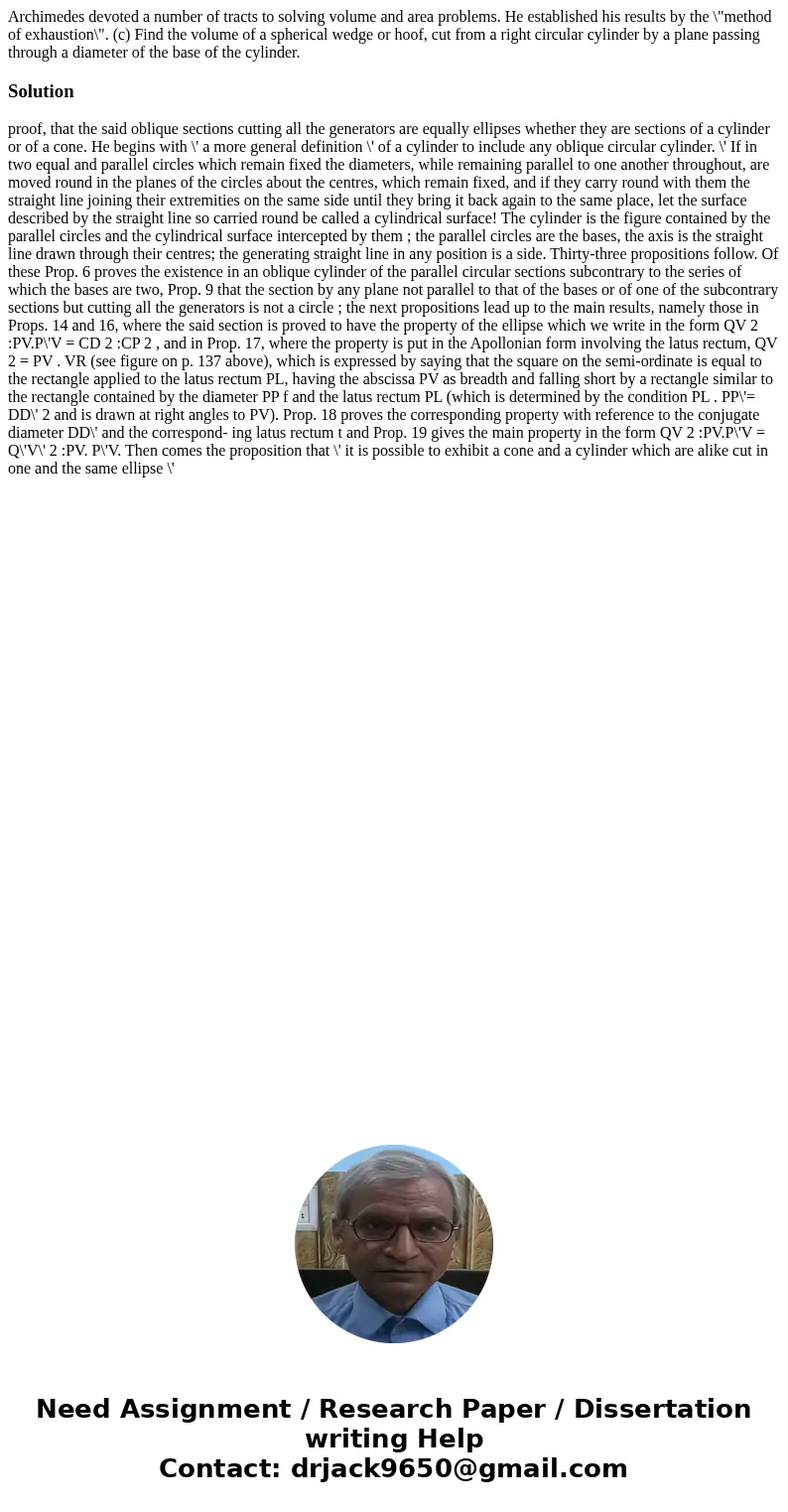Archimedes devoted a number of tracts to solving volume and
Archimedes devoted a number of tracts to solving volume and area problems. He established his results by the \"method of exhaustion\". (c) Find the volume of a spherical wedge or hoof, cut from a right circular cylinder by a plane passing through a diameter of the base of the cylinder.
Solution
proof, that the said oblique sections cutting all the generators are equally ellipses whether they are sections of a cylinder or of a cone. He begins with \' a more general definition \' of a cylinder to include any oblique circular cylinder. \' If in two equal and parallel circles which remain fixed the diameters, while remaining parallel to one another throughout, are moved round in the planes of the circles about the centres, which remain fixed, and if they carry round with them the straight line joining their extremities on the same side until they bring it back again to the same place, let the surface described by the straight line so carried round be called a cylindrical surface! The cylinder is the figure contained by the parallel circles and the cylindrical surface intercepted by them ; the parallel circles are the bases, the axis is the straight line drawn through their centres; the generating straight line in any position is a side. Thirty-three propositions follow. Of these Prop. 6 proves the existence in an oblique cylinder of the parallel circular sections subcontrary to the series of which the bases are two, Prop. 9 that the section by any plane not parallel to that of the bases or of one of the subcontrary sections but cutting all the generators is not a circle ; the next propositions lead up to the main results, namely those in Props. 14 and 16, where the said section is proved to have the property of the ellipse which we write in the form QV 2 :PV.P\'V = CD 2 :CP 2 , and in Prop. 17, where the property is put in the Apollonian form involving the latus rectum, QV 2 = PV . VR (see figure on p. 137 above), which is expressed by saying that the square on the semi-ordinate is equal to the rectangle applied to the latus rectum PL, having the abscissa PV as breadth and falling short by a rectangle similar to the rectangle contained by the diameter PP f and the latus rectum PL (which is determined by the condition PL . PP\'= DD\' 2 and is drawn at right angles to PV). Prop. 18 proves the corresponding property with reference to the conjugate diameter DD\' and the correspond- ing latus rectum t and Prop. 19 gives the main property in the form QV 2 :PV.P\'V = Q\'V\' 2 :PV. P\'V. Then comes the proposition that \' it is possible to exhibit a cone and a cylinder which are alike cut in one and the same ellipse \'
 Homework Sourse
Homework Sourse